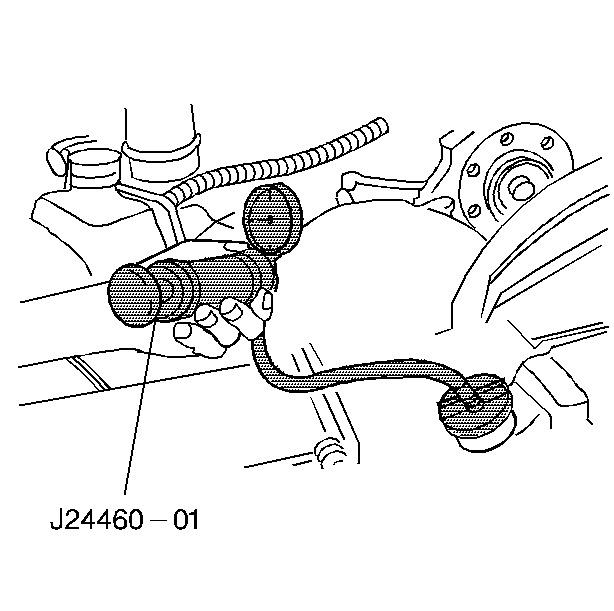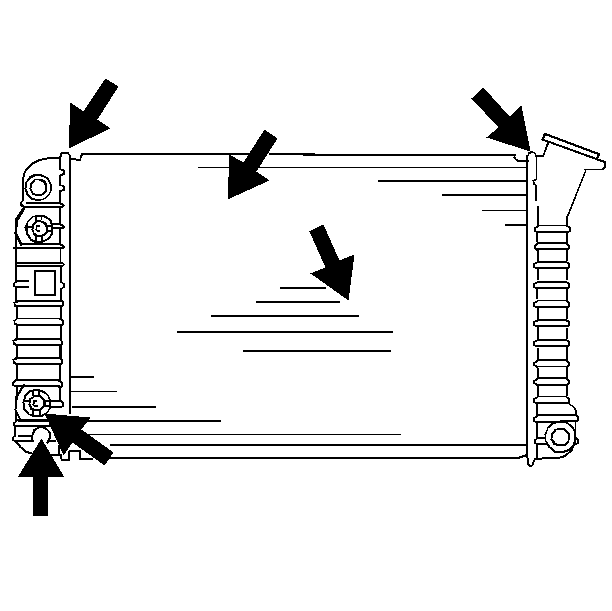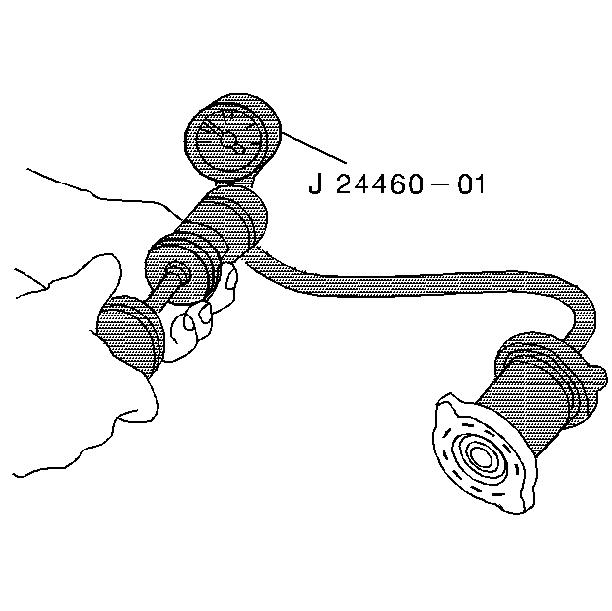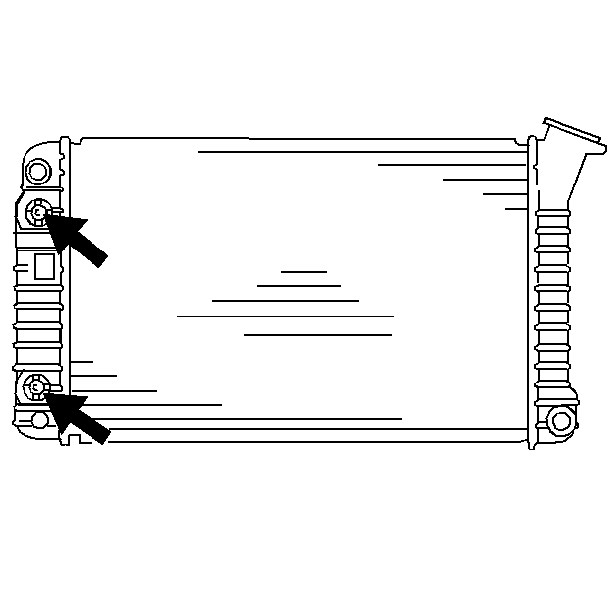Radiator Diagnosis Pressure Testing
Leak Testing Procedure (On Vehicle)
Caution: As long as there is pressure in the cooling system, the temperature can be considerably higher than the boiling temperature of the solution in the radiator without causing the solution to boil. Removal of the pressure cap while the engine is hot and pressure is high will cause the solution to boil instantaneously -- possibly with explosive force -- spewing the solution over the engine, fenders and the person removing the cap.
Notice: Do not use pressure greater than 138 kPa (20 psi) to test the radiator. Damage to the radiator will result if a higher pressure is used.
Tools Required
J 24460-01 Cooling System and Cap Pressure Tester
- After the system has cooled, remove the radiator cap. Refer to Radiator Assembly .
- Connect the J 24460-01 to the radiator.
- Apply normal system operating pressure. Do not exceed 138 kPa (20 psi).
- Watch the gauge needle for an indication of a leak. Examine all cooling system connections and components, including the radiator and the heater core, for leaking coolant.
- Tighten the hose connections or repair as required.
- In order to make sure the cap maintains the correct pressure, Check the radiator cap with J 24460-01 .
- If the radiator leaks during the pressure test, mark the leak area so the leak is found once the radiator has been removed from the vehicle.



Leak Testing (Off Vehicle)
Notice: Do not use pressure greater than 138 kPa (20 psi) to test the radiator. Damage to the radiator will result if a higher pressure is used.
Notice: Do not use boil-out tanks that have been used for copper or brass radiators. The flux and caustic cleaners remaining in these tanks will attack the aluminum radiator causing failure. Use a separate tank containing clean water for servicing aluminum and plastic radiators.
- Remove the radiator from the vehicle. Refer to Radiator Replacement .
- Clean the radiator core so that the damaged area can be seen.
- Remove dirt and insects from the radiator fins with a common water hose, without the nozzle. Do not exceed 138 kPa (20 psi) of pressure.
- Find the radiator core leaks by adding water to the radiator.
- Install test fittings, or rubber test caps, in the inlet and outlet necks. Seal the oil cooler fittings with metal plugs in order to protect the cooler and to keep fluid from coming out.
- Attach the J 24460-01 to the radiator.
- Gradually apply normal system pressure until 138 kPa (20 psi) is reached. Do not exceed 138 kPa (20 psi).
- Check the pressure gauge to see if there is pressure loss.
- In order to ensure that there are no small leaks, run water over the suspect area. Look for any bubbles. Using a mild detergent can be helpful.
- If a large water tank is available, you can submerge the radiator. You can then check for air bubbles.


